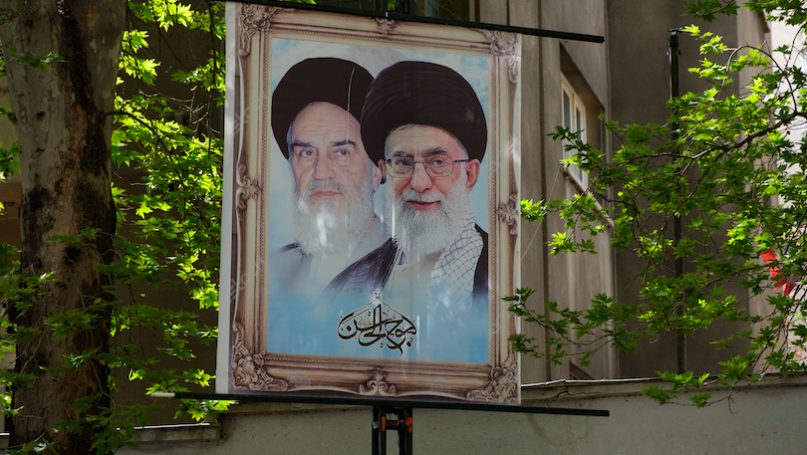
Ever since the 1979 Islamic revolution in Iran, the Iranian regime has used various means and mechanisms to coerce, pressurize, and eliminate opposition groups and any form of dissent. The protests after the death of Mahsa Jina Amini that swept across the country were dealt with brutal force and violent measures drawing criticisms from the international community as well as several human rights organizations. The Iranian regime has tried to divert attention and has blamed external interference thereby disregarding the organic nature of the protests. By pointing fingers at the US and Israel, Iran is trying to perpetuate a regime-manufactured narrative and slap serious charges like ‘threat to national security’ on dissidents and protesters thereby enabling the security forces to detain and arrest them.
Such accusations remain to be baseless as the nature of the protests was impulsive and unorganized in the initial weeks and grew over time in response to the violence unleashed by the security forces. Also, as the online movement expressing solidarity with the protesting Iranians grew, the Iranian regime is now facing newer challenges to contain the opposition. The 1979 Iranian revolution itself aimed to bring greater political freedom and accountability, however, after more than four decades of the revolution domestic situation in Iran is mired in political oppression, corruption, and a prolonged economic crisis.
Iran’s Supreme Leader, Ali Khamenei, is now criticized for his responses to the protests. However, it is important to note that Khamenei is repeating the rigidity and intolerance of his predecessor and the leader of the Iranian revolution, Ruhollah Khomeini. For example, the 1988 mass executions against the then political opposition composed largely of members and associates of Fedayan, Tudeh, and Peoples Mojahedin of Iran were carried out to eliminate opposition and perpetuate fear. The use of religion to justify the brutal measures against the protesters also reflects the institutionalized mechanisms of the Iranian regime to retain political legitimacy and eliminate immediate challenges.
After nearly four decades, the Iranian regime is continuing its policy of coercion, intimidation, and violence using the same narratives of threatening the Islamic revolution by using the security forces and legal system to protect the regime’s interests. The protestors are often prosecuted on vaguely laid out charges like enmity against God (Moharabeh) and corruption on earth (Mofsed fel-Arz) that have often enabled the Iranian regime to arrest and execute dissidents.
The Iranian regime has also used its state-run media to build a narrative in favour of the regime and build consensus among the people. However, several polls and studies reveal that Iranians view the news from state media with utmost skepticism and do not regard it as credible and trustworthy. Press freedom within Iran remains to be one of the worst ranking 178 out of 180 on the Press Freedom Index. The Iranian regime continues to clamp down on the protests using digital repression. Amid the growing protests, the Iranian regime reportedly used internet blackouts and used surveillance, and spyware to track down the protesters. The regime’s tight grip on the internet has inevitably assisted the security forces to suppress the protests and demonstrations to some extent.
The deteriorating internal security situation in Iran has already resulted in the death of more than 300 people as per official Iranian sources, however, as per Iran Human Rights, more than 448 people have been killed by the security forces. Amid growing protests, Iran has also escalated cross-border attacks in Iraq in a clear violation of international regulations. Iran has utilized its political and military resources in Iraq to exploit the situation and intensify the crackdown on Kurdish groups. The friction between the Kurdistan Democratic Party (KDP) and the Patriotic Union of Kurdistan (PUK) has enabled Iran to penetrate Kurdish politics. The IRGC has often pressurized the Kurdish government to eliminate anti-Iran groups in the region that challenge the Iranian regime like Komala and the Kurdistan Democratic Party of Iran. Iran has long-standing ties with the PUK that have allowed Iran to influence the political and security situation in the region.
It is also important to note that Iran has invested in proxy militias and groups to influence Iraqi politics in the last two decades. The low to medium-scale cross-border conflicts Iran is involved in targeting the Kurdish groups allows Iran to escalate the attacks in times of domestic crisis and eliminate opposition groups with cross-border links.
As an effect of US-led sanctions, Iran has been facing a major economic crisis and the Ebrahim Raisi government has been unsuccessful in delivering the promises to improve the living conditions. The death of Mahsa Amini is seen as the tipping point that mobilized people from different parts of the country amid deteriorating living conditions experienced in several parts of Iran largely because of government mismanagement. The immediate effects of the protests will depend on multiple factors, however, the nature of the response to the protests reveals the Iranian regime’s fear as it faces one of its most serious legitimacy crises.
Further Reading on E-International Relations
- Opinion – The Iranian Regime’s Future Post Soleimani
- Opinion – Iranian Soft Power in a Post Soleimani Era
- Opinion – How Iranian Women Are Charting the Course for Freedom
- The Iranian Revolution at 40: Shifting Grounds, Continuing Resilience
- Opinion – Rojhelat a Year After Jina’s Movement and the Iranian Response
- Opinion – Iraq’s Toughest Challenge: Controlling the Iranian-backed Militias